Kincheloe Air Force Base
The present-day Chippewa County International Airport, Kinross Correctional Facility, and the community of Kincheloe are located on the site of the base.The mission of Kinross AAF was to serve as a refueling stop for aircraft headed for Alaska as well as to defend the locks of Sault Ste.The base was inactive beginning in 1945, and after the end of World War II, the airfield was leased to the City of Sault Ste.A 7,000-foot jet runway (16/34) was laid down along with accompanying taxiways, concrete block buildings and other support facilities to replace the existing structures that were viewed as substandard for a permanent Air Force base.The 438th Fighter-Interceptor Squadron was activated at the new base on 27 April, equipped with first-generation Lockheed F-94B Starfire jet interceptor aircraft.Flying out of Kinross, On November 23, 1953, pilot Felix Moncla and Radar Operator Robert Wilson and their plane disappeared while pursuing a UFO over the Soo Locks and Lake Superior.This was part of the ADC "Project Arrow" program, which was designed to bring back on the active list the fighter units which had compiled memorable records in the two world wars.In May 1958 the 438th FIS was temporarily transferred to K. I. Sawyer AFB southeast of Marquette, while the main runway at Kinross was extended to 12,000 feet (3,700 m) in preparation for Strategic Air Command (SAC) B-52 Stratofortresses.The missile site was located at the World War II Raco Army Airfield, 46°20′53″N 084°48′18″W / 46.34806°N 84.80500°W / 46.34806; -84.80500 (37th ADMS) about 17 miles west-northwest of Kincheloe AFB.The SAGE system was a computer-controlled network linking USAF (and later FAA) General Surveillance Radar stations into a centralized center for Air Defense, intended to provide early warning and response for a Soviet nuclear attack.Air Defense Command inactivated its interceptor facilities due to budgetary reasons caused by the cost of the Vietnam War.By the late 1960s, and with the development of Intercontinental Ballistic Missiles (ICBM), it was believed that the chance of a Soviet bomber attack on the United States was remote and the USAF began closing fighter-interceptor bases at the direction of the Secretary of Defense.The wing did deploy individual B-52 crews, but not its B-52H aircraft, to Southeast Asia during the Vietnam War, as the Kincheloe B-52Hs were strictly dedicated to SAC's strategic deterrence mission.However, Kincheloe's KC-135A tanker aircraft and aircrews participated in the "Young Tiger" TDY effort, and the bomber aircrews went through RTU training to fly older B-52Ds out of Andersen AFB, Guam and U-Tapao RTAFB, Thailand and were active participants in many of the notable campaigns that took place in Southeast Asia such as Arc Light, November 1965 – December 1975, and B-52 crews, May 1968 – June 1975.The decision to close Kincheloe was part of a phase-down of the SAC B-52 bomber fleet as a result of the operational deployment of Minuteman ICBMs and the increasing cost of the Vietnam War that was stretching the Defense Budget.This was only a six-year reprieve, as the base was inactivated on 30 September 1977 as part of an ongoing Reduction in Force in the USAF following the end of the Vietnam War.
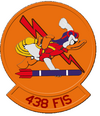

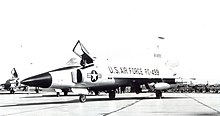

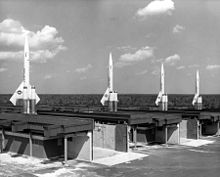
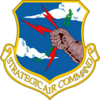

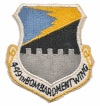



Chippewa County International AirportStrategic Air CommandKinross Charter Township, MichiganSault Ste. MarieAir Force449th Bombardment WingUnited States Air ForceCold WarUpper Peninsula of MichiganWorld War IIKinross Correctional FacilityKincheloeIven Kincheloetest pilotSoo LocksKinrossAir Transport CommandAlpena Army AirfieldAlaskaAlpena AAFCapital AirlinesTrans-Canada Air LinesKorean War30th Air DivisionAir Defense CommandSault Ste MarieGreat Lakes534th Air Defense Group4706th Defense WingO'Hare International Airport438th Fighter-Interceptor SquadronF-94B StarfireNorthrop F-89D ScorpionAir National GuardFelix MonclaLake SuperiorGrand Marais AFSCalumet AFSAlpena AFSEmpire AFS507th Fighter Group37th Air DivisionTruax FieldF-102 Delta DaggerK. I. Sawyer AFBMarquetteB-52 StratofortressesCassopolisBell X-2Mackay TrophyF-104 StarfighterEdwards AFB37th Air Defense Missile SquadronCIM-10 Bomarcsurface-to-air missilesRaco Army AirfieldSault Sainte Marie Air Defense SectorSemi Automatic Ground EnvironmentF-106 Delta Dart507th Fighter WingVietnam WarIntercontinental Ballistic MissilesSecretary of DefenseGriffiss AFBKC-135Christmas treeMole holealert crewsKincheloe AFBMichiganB-52 StratofortressSoviet Union93d Bombardment SquadronMAJCOMSecond Air Force40th Air Division716th Bombardment SquadronSoutheast AsiaAndersen AFBU-Tapao RTAFBArc LightLinebacker II1964th Communications GroupDepartment of DefenseMinutemanBeale AFBfederal governmentnational emergencyChippewa Correctional FacilityDie Hard 2Bruce WillisAlpena AirportMichigan World War II Army Airfieldspublic domain materialMaxwell Air Force BaseAlabamaAndersenAndrewsBarksdaleBollingCannonCape CodColumbusDavis-MonthanEielsonEllsworthF. E. WarrenFairchildForbesGrand ForksGrissomHomesteadLincolnLittle RockMacDillMalmstromMcChordMcConnellMcGuireMountain HomeNellisOffuttPatrickRickenbackerRobinsSeymour Johnson